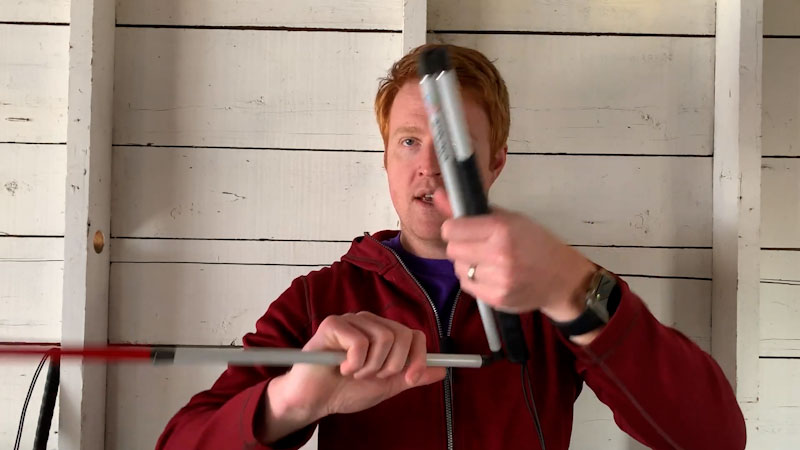Orientation & Mobility Skill Refresher Series: 7 Benefits of a White Cane--Blind & Visually Impaired
Now Playing As: Captioned (English)
A white cane is a device used by many people who are blind or visually impaired. It primarily allows its user to scan their surroundings for obstacles or orientation marks but is also helpful for onlookers in identifying the user as blind or visually impaired and taking appropriate care. This video discusses several other benefits of using a white cane. Part of the "Orientation & Mobility Skill Refresher Series."
Media Details
Runtime: 6 minutes 8 seconds
- Topic: Blind Life, Education
- Subtopic: Blind - General, Blind Education
- Grade/Interest Level: 6 - 12
- Standards:
- Release Year: 2021
- Producer/Distributor: Blind On The Move
- Series: Orientation & Mobility Skill Refresher Series
- Report a Problem
Related Media

Orientation & Mobility Skill Refresher Series: How to Change Display and Text Size on iPhone and iPad iOS 14--Low Vision/Visually Impaired

Orientation & Mobility Skill Refresher Series: How to Hold a White Cane--Thumb Grasp

Orientation & Mobility Skill Refresher Series: How to Hold a White Cane--Pencil Grasp

Orientation & Mobility Skill Refresher Series: Shopping Tip for Blind and Visually Impaired

Orientation & Mobility Skill Refresher Series: The Parts of a Rigid White Cane

Orientation & Mobility Skill Refresher Series: How to Hold a White Cane--Index Finger Grasp

Orientation & Mobility Skill Refresher Series: How to Fold a Folding White Cane

Orientation & Mobility Skill Refresher Series: How to Unfold a Folding White Cane

Orientation & Mobility Skill Refresher Series: The Parts of a Folding White Cane

Orientation & Mobility Skill Refresher Series: Introduction
